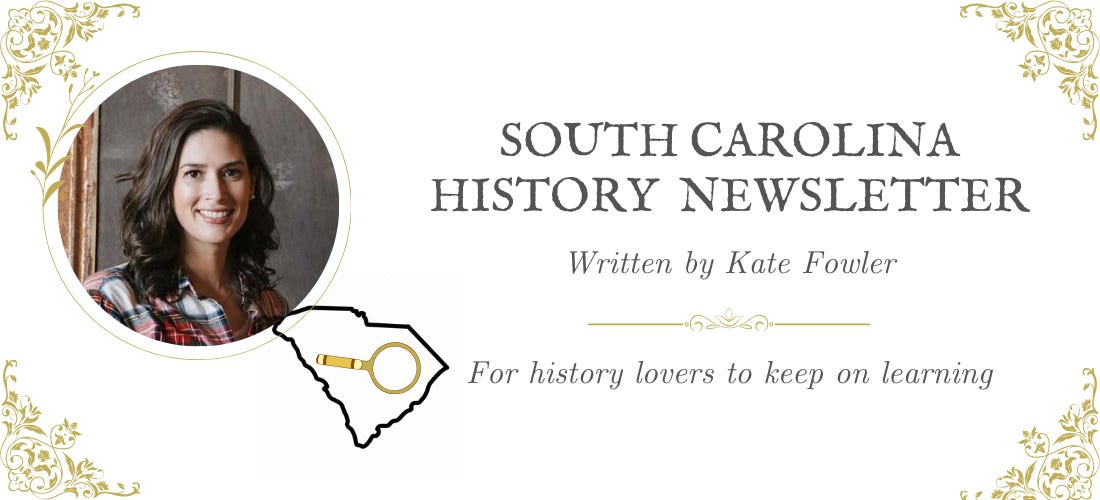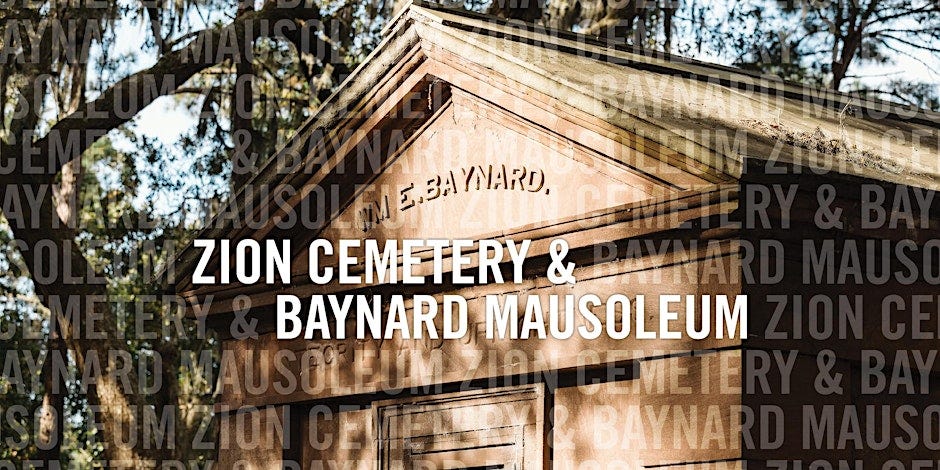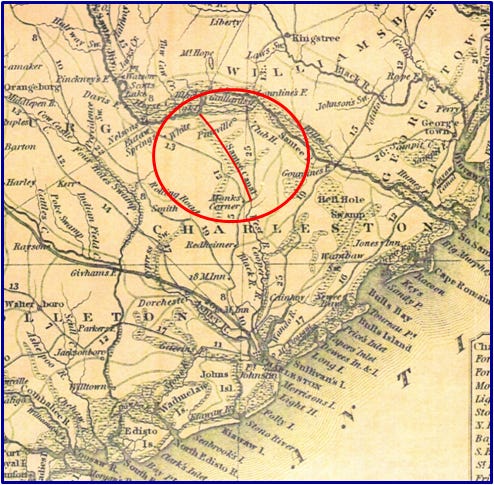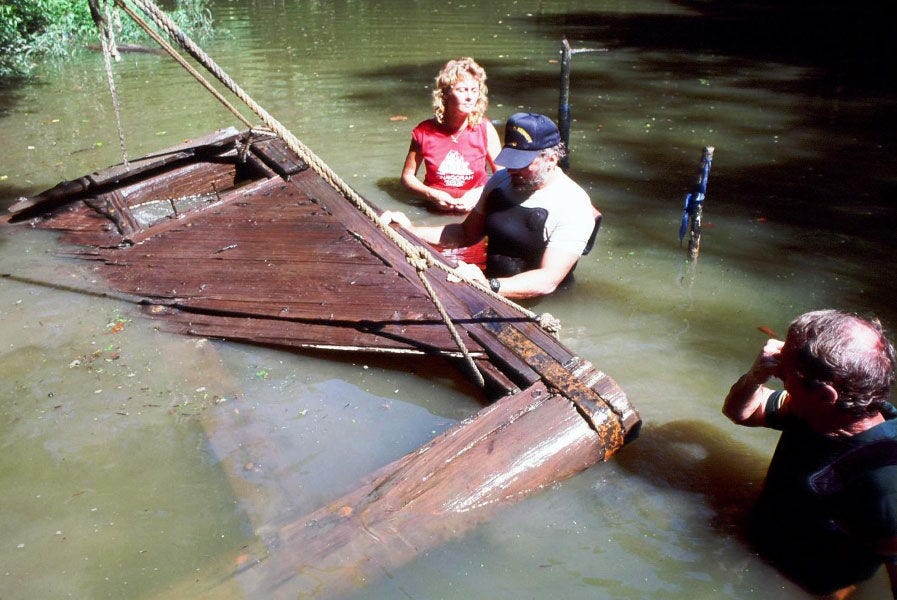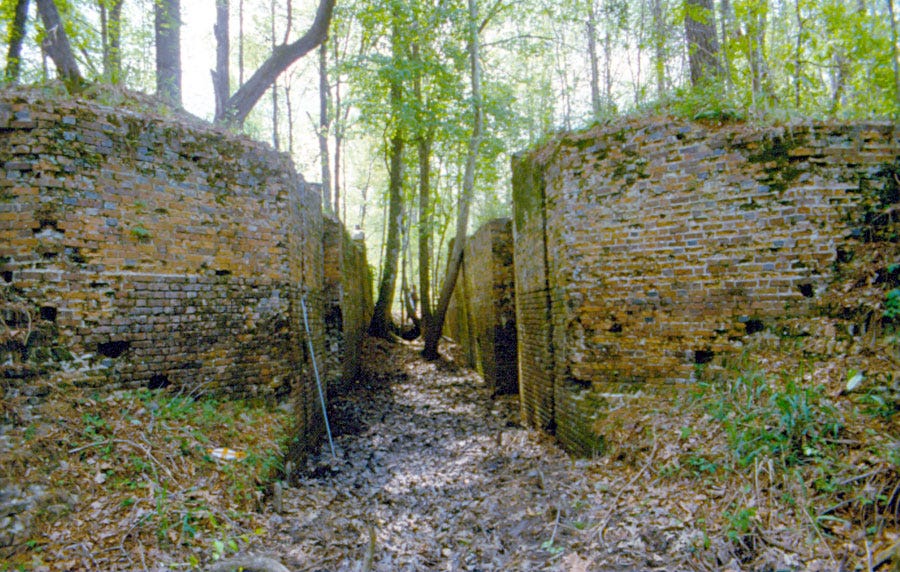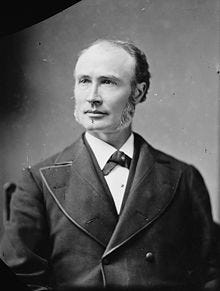#44: The Santee Canal, Claflin University, and the Zion Cemetery Costumed Cemetery Tour
For South Carolina history lovers far and wide! Enjoy weekly SC history and upcoming SC historical events
Dear reader,
Welcome to Newsletter #44 of The South Carolina History Newsletter! I’m so happy you’re here.
I’d like to extend a special welcome to the following new subscribers of the SC History Newsletter community below! Woohoo!
ropp.derenda
geversmann
k4btc
karen.ford.sc
annahbracknell
coakleyconsulting
chiefwah06
cynde.epck
rustycantsleep
wtw529
erica.brown
odgraff
I hope you enjoy today’s newsletter, and as always, please feel free to reply to this email with your ideas and suggestions on South Carolina history you’d like to learn more about. I’m only a click away.
Additionally, please join us & keep the conversation going by becoming a member of our SC History Newsletter Facebook Community here! I can’t wait to meet you.
And now, let’s learn some South Carolina history!
Yours truly,
Kate
(Writing from Greenville, SC)
➳ Featured SC History Event
Please enjoy our featured SC History Event below, and click here to visit my SC History Events Calendar that organizes all the upcoming SC history events I have discovered. Please let me know if you’d like to add an event to the calendar! Reply to this email or send me a note at schistorynewsletter@gmail.com.
Tuesdays at 10:30 am from April 16 - October 15, 2024 | “2024 Zion Cemetery & Baynard Mausoleum Costumed Cemetery Tour” | Zion Cemetery & Baynard Mausoleum Outdoor Learning Center | Hilton Head Island, SC | Tickets: $10 Members; $12 Non-Members
“The Island’s history comes to life every Tuesday at 10:30 am at Zion Cemetery & Baynard Mausoleum with this trip back in time, featuring costumed tour guides sharing fascinating stories of Hilton Head Island’s past. Visit the gravesites of four Revolutionary War heroes and find out about the bloody skirmish that was fought just steps away. Explore the island’s oldest structure and learn about the planters who built it. You’ll learn their stories of the Colonial era on Hilton Head Island and more as you tour one of the island’s most intriguing sites.”
➳ SC History Fun Facts
I.
Did you know that South Carolina’s Santee Canal, opened in 1800, was one of the first large-scale canals built in the United States?
Conceived to provide a shorter, safer water route from inland South Carolina to Charleston, the Santee Canal was one of the earliest large-scale canals in the United States and perhaps the earliest major internal improvement project in the state.
In 1786, the South Carolina General Assembly created a charter to construct and maintain the inland canal, which would eventually link the “Cooper River near Charleston, with the Santee River, which connects to the Congaree River and the city of Columbia.” Among the shareholders of the charter were several notable South Carolinians including William Moultrie, Francis Marion, and Charles Pinckney.
The Santee Canal was constructed between 1793 and 1800 under the direction of Col. John Christian Senf, a Swedish-born engineer who had served with Hessian troops during the Revolution, and at this time was South Carolina’s State Engineer.
More than 700 laborers (mostly slaves) worked with picks and shovels for 7 years to finish the Old Santee Canal. The canal route was 22 miles long, beginning 2 miles below Greenwood Swamp on the Santee River and entering the Cooper River at Stoney Landing, approximately 2 miles east of Moncks Corner. It had 2 double locks and 8 single locks. Its width was 35 feet at the water's surface and 20 feet at the bottom. Its depth was 4 feet. With the exception of a wooden tidal lock, all the locks were made of brick and stone.
In addition to the canal itself, several “warehouses, keepers’ houses, and other ancillary structures” were built along the route.
In 1793, the cost of construction was estimated to be £55,000 sterling. At completion in 1800, it was determined that the canal actually cost over $800,000. All funds were from private subscription, and there was “no help from the state.”
The canal opened in 1800. Initially, boats and barges were pulled down the canal by mules and horses, using ten-foot wide “tow paths” on either side. Later, the use of horses and mules was abandoned, and the boats were pushed through the canal by crewmen with poles. The towpaths are still visible for large parts of the canal.
The first boat to traverse the new canal in June 1800 carried a cargo of salt from Charleston up the Cooper River, the canal, the Santee River, then the Congaree River — some 200 miles up to Columbia. As the canal got up and running, tolls ranged from $10 to $30 depending on the size of the boat.
The advent of successful cotton production made the canal very useful for transporting cotton bales. In 1830, during the canal’s most prosperous period, “720 boats arrived in Charleston bearing about 70,000 bales of cotton via the canal.”
Although it opened the interior of South Carolina to water transportation for the first time, the Santee Canal was not a financial success. Construction was much more costly than anticipated. Then, the rise of the cotton industry on inland plantations and farms led to less shipment of grains to the coast. Cotton, which was lighter and more valuable than grains, could withstand transportation over land. Transportation over rivers was plagued by “frequent mishaps, low water, and delays.”
Due to “sparse traffic, poor construction, and droughts," the Santee Canal began to decline. The construction of railroads led to increased competition for transporting cargo inland, and soon, the canal lost its state charter in 1853. All associated “outbuildings, turning basins, lock bridges, and the wooden lock were destroyed since abandonment in 1850.” The Santee Canal was not used after 1865. Much of the original canal was eventually covered by the reservoir Lake Moultrie.
Over 100 years after the canal’s abandonment, in 1987, SCIAA's Underwater Antiquities Management Program (now the Maritime Research Division) was contracted by South Carolina State Parks, Recreation, and Tourism and the Santee-Cooper Public Service Authority to document several portions of the Santee Canal for eventual creation of a park. Underwater and overgrown sections of the canal, “several locks, two shipwrecks, and a barge” were recorded during the project.
Additionally, in 1986, SCIAA terrestrial archaeologists recorded adjacent land sites, which now comprise Old Santee Canal State Park, where visitors can explore the remains of one of America’s great early infrastructure projects, as well as the area's extensive history and habitat.
II.
Did you know that Claflin University in Orangeburg is the oldest historically black college or university in South Carolina?
Originally named Claflin College, Clafflin University was founded in 1869, and named in honor of Lee Claflin, a prominent Methodist layman of Boston, and his son William Claflin, the governor of Massachusetts. These men were “ardent abolitionists” who “harbored a great concern for higher education and the uplift of African-Americans.”
Just one year earlier in July 1868, the Rev. Timothy Willard Lewis, the first missionary sent by the Methodist Church to the emancipated people of South Carolina, and Dr. Alonzo Webster, a prominent Methodist minister and teacher at the Baker Theological Institute in Charleston, South Carolina, “had acquired the property of the old Orangeburg Female Institute for $5,000.” With the substantial financial support of Lee and William Claflin, Lewis and Webster secured the foundation of what would become Claflin University.
In the following months, a Board of Trustees was named, a charter was secured in December 1869, and Claflin University was opened with the promise to “make Claflin University, by the blessing of God and the aid of our friends, worthy of the patronage of all classes and an honor to the state.”
Claflin’s founders made a commitment, which they stated in the charter, “to the effectual promotion of virtue, piety and learning.” With “the only admission requirements for prospective students being the possession of good moral character and a conscientious desire to learn,” Claflin University offered, for the first time in South Carolina, quality higher education for men and women “regardless of race, complexion, or religious opinion.”
Today, Claflin serves roughly 1,800 students per year and offers 37 undergraduate majors, 4 graduate degrees, and 7 online degrees. Claflin students, faculty and staff hail from 43 countries.
Notable Claflin alumni include:
William Bulkley (1882) – One of the first African Americans in America to receive the degree of Doctor of Philosophy (PhD. from Syracuse University in 1893)
Alice Jackson Moorer (1884) and Annie Thortne Holmes (1884) – Two of the first five black women in the world to receive college degrees
Robert Bates (1884) – First African-American certified as an architect
Ernest A. Finney, Jr. (1952) – First African American to serve as chief justice of the South Carolina Supreme Court
Leo F. Twiggs (1956) – Internationally recognized artist and first African-American to receive a doctorate from the University of Georgia
A final note that in 2020, American philanthropist MacKenzie Scott donated US $20 million to Claflin University. Scott wrote on her blog that her team of advisors looked at more than “6,000 organizations before narrowing it down to 384.” Claflin is one out of 17 HBCUs to receive a donation from Scott. Her donation is the largest single gift in Claflin's history.
➳ Quote from an SC historical figure
I.
“What you do from this day forward will define what it means to be elevated and transformed at Claflin University. The mentoring you receive from the juniors and seniors will make a difference in your career. They overcame COVID-19 — they fought through it. They are the reason we opened early. Listen to them. They have a message for you.”
—Claflin President Dr. Dwaun J. Warmack in a speech to the Claflin class of 2027: “What will be your legacy"?”
Sources used in today’s newsletter:
History of Claflin University, South Carolina's first historically Black college
Claflin President Dwaun Warmack challenges the Class of 2027: ‘What will be your legacy?’
I always want to improve my work. Answer the poll below to give me your review of today’s newsletter. I also welcome your suggestions for new content! Simply reply to this email with your ideas. Thank you!



